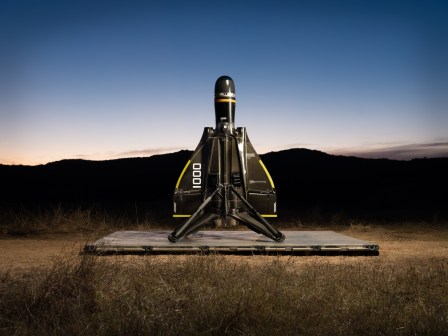Air Force, Navy collaborating on 4 ‘fundamentals’ of CCA drones

NATIONAL HARBOR, Md — The Air Force and Navy are working together to ensure their future “collaborative combat aircraft” (CCA) will be interoperable and have agreed to standardize four components of their platforms, according to a program executive officer leading the effort.
The services want their respective robotic wingmen to have common aircraft architecture, communications links, autonomy architecture and ground-control segments, Brig. Gen. Dale White, PEO for fighters and advanced aircraft, told reporters Wednesday during a roundtable at AFA’s Air, Space and Cyber conference.
“We do have those four focus areas that allow us to leverage the interoperability that we think we need [for] a CCA because this is not just a single-service solution, and we know that going in,” he said.
Both the Air Force and the Navy want their CCA drones to fly alongside their sixth-generation fighter jets — the Next-Generation Air Dominance (NGAD) and the F/A-XX fighters, respectively — as well as be compatible with aircraft currently in the fleet.
The Air Force is currently planning for 1,000 such systems, and it hopes to have the initial iteration ready for fielding before the end of this decade. At the same time, the Navy already has draft requirements documents and a draft acquisition strategy in the works, according to an August report by Aviation Week.
White noted that the Air Force’s collaboration with the Navy isn’t about each of their requirements, “but the fundamentals of what it takes to make a CCA capability successful.”
Both of the services have indicated that they want to pass off control of each other’s robotic wingmen, and there has already been cross-service work done in regards to the networking components that will be needed to optimize CCAs.
During a separate roundtable discussion with reporters on Monday, Air Force acquisition chief Andrew Hunter highlighted the benefit of working with the Navy, especially as the sea service continues developing sophisticated networking technologies.
“I think what’s really driving us together is that in many ways, the missions we’re looking to perform are very common,” Hunter said. “If the Navy has a solution that really works — and in some cases they do — then it pays for us to adopt it and vice versa.”
Despite predicting that future missions will require the Air Force and Navy to have some common baselines for their CCAs, White emphasized that the services’ still operate in vastly different domains. Because of this, the four common components will still allow for adaptability to different environments, he said.
“Now each service has a little more flexibility to go off and address specific requirements,” White said. “In the Navy’s case, marinisation is very different. I don’t have that challenge. So that’s the kind of flexibility.”






